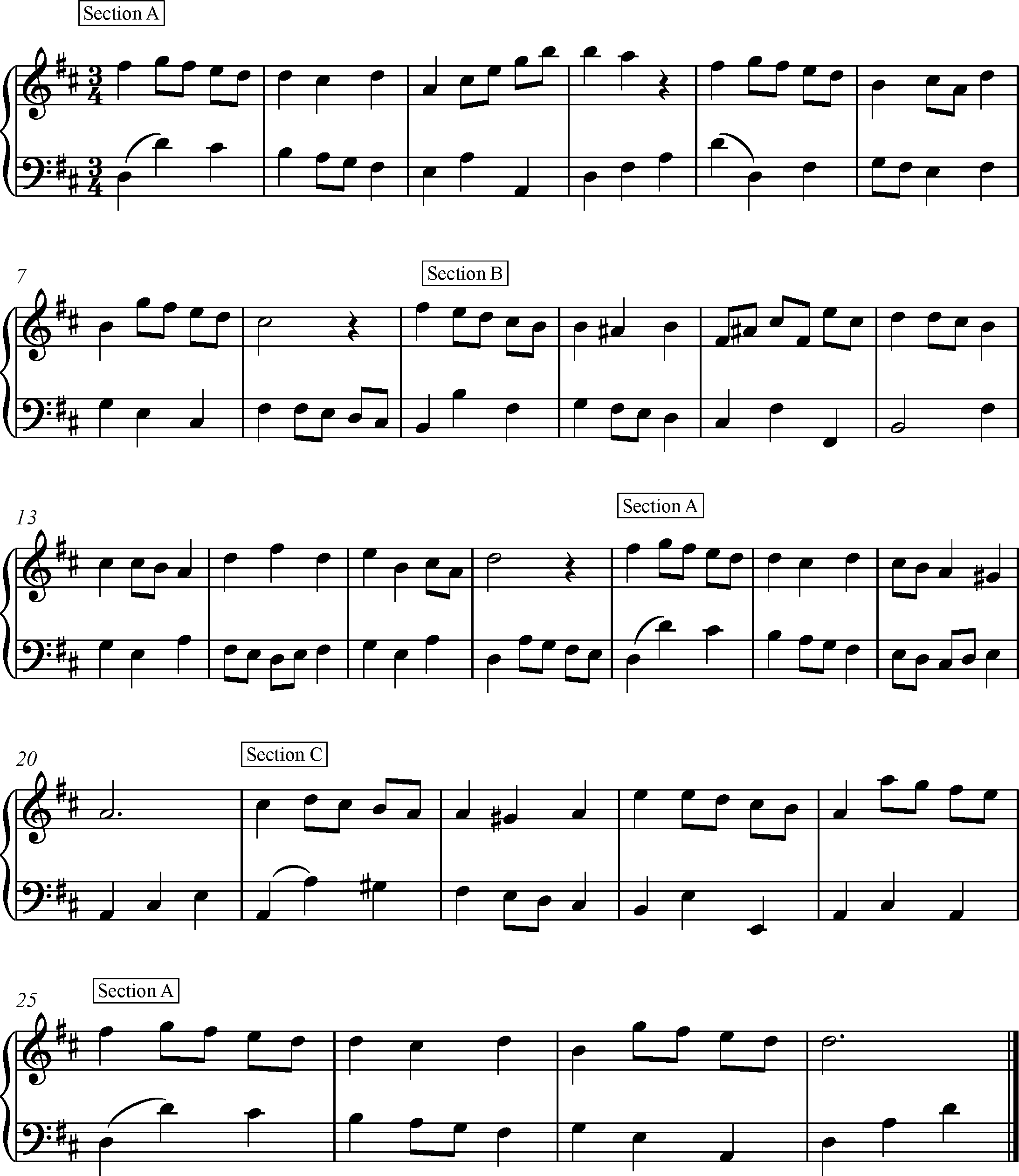A8 | Transposition and the rondo form
Listen to this
What is transposition?
Transposing music means to move from one key to another. This can be useful in many respects:
- it creates variety within the unity of the music and a theme can be repeated in a different key without straying too far from the original idea.
- a different key can be used to define a different SECTION within a piece of music. This intonation is called a ACTIVE INTONATION. Follow the video link. The concerto movement for French horn, Mozart’s No 4, is structured as a RONDO. This means that the main theme returns time after time. The different sections can be labelled as follows. Can you hear them?
https://www.youtube.com/watch?v=VEJFuWgkGkY
|
A |
B |
A |
A |
B |
A |
|
E♭ major TONIC key |
B♭ major DOMINANT |
A |
C minor RELATIVE MINOR key |
A |
A |
- Section A is the main theme. It is in the tonic key of E♭ major.
- Sections B and C include several transpositions but section B is mainly in the dominant key of B♭ major, whilst section C is in the relative minor key of C minor.
- A concerto usually consists of three movements. Here you will hear the final movement, which consists of the RONDO structure which is very popular in such a piece.
- Despite the key of E♭ major being shown for the whole piece, it is easy to say that section B is in B♭ major as ONE musical note relates to B♭ major – A. This is also the case in section C in C minor, where you are drawn to the C and B notes often in the music.
Recognising a key
The following piece is in the key of D major. So is section A every time. Can you work out the key for sections B and C? Look at the accidentals. As in the case of Mozart’s Rondo, why not begin by looking for the relative keys such as the dominant and relative minor first?
